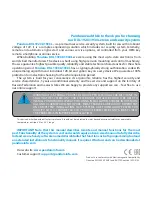
– 41 –
Radio group: at least two,
maximum 15 RISAs
• All networked units of the same
radio group will issue an alarm
when at least one RISA of this group
detects smoke or temperatures
typical of fire
• The first alarm to be activated is
temporarily assigned the “master”
function (of establishing and mana-
ging the radio group)
• This first-activated alarm should
be fitted in a central position
(e.g. landing or corridor)
Common radio group: is also a normal
radio group
• where one or more radio groups
(e.g. a flat) are linked to a specific
radio group (e.g. stairway), this
becomes a common radio group.
• All interlinked alarms of a radio
group trigger an alarm (e.g. in a flat)
• All alarms of the common radio
group (e.g. stairway) will also, after
a delay period of roughly 60 seconds,
issue alarms if they are linked as
a common radio group to the radio
group of the flat
• Alarms are transferred only from the
radio group (e.g. flat) to the com-
mon radio group (e.g. stairway)
• There is no transfer in the other di-
rection, from the common radio
group (e.g. stairway) to the radio
group (e.g. flat)
• Up to 14 radio groups can be inter-
linked to a common radio group
• A radio group cannot be linked
to a common radio group and
also with other radio groups
Setting Up the “Master”:
Remove the black activation pin
(which also acts as activation protec-
tion); but this will still be needed.
Press red activation button
Inbe
tr
ie
bn
ahme
GB
Summary of Contents for RWM450
Page 32: ... 32 ...
















































